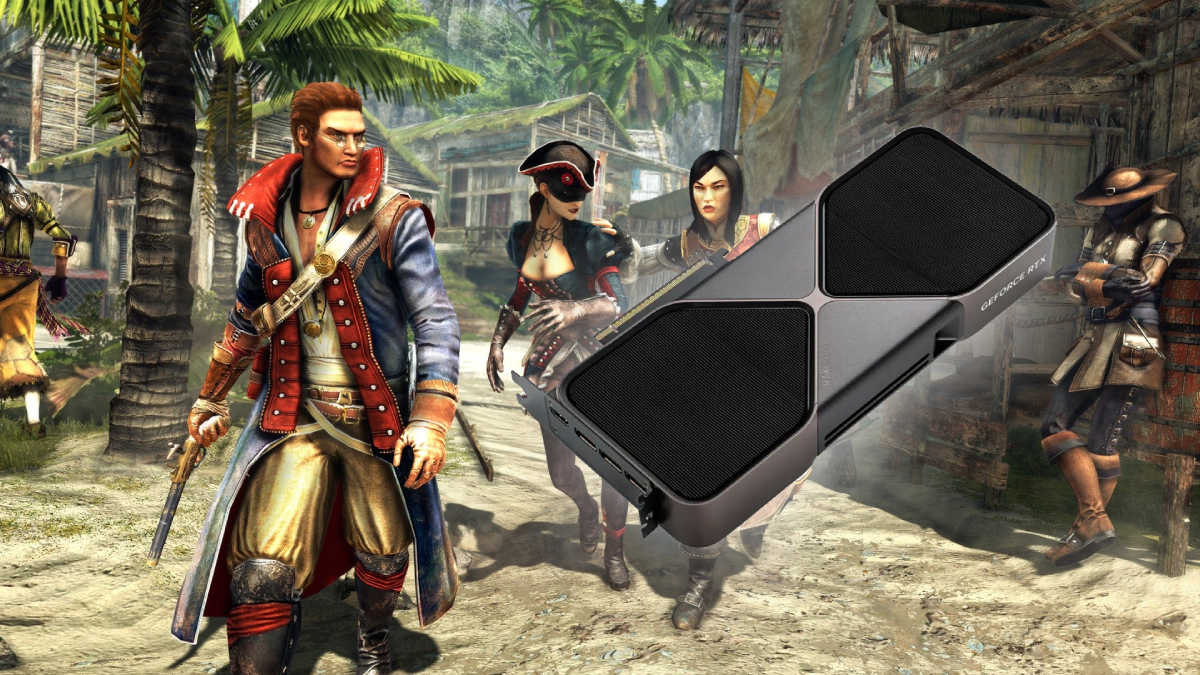Here’s how to get around the PhysX issues if you have an RTX 50 series graphics card

Table of Contents
In recent news regarding issues with the RTX 50 series cards, Nvidia has confirmed that it has removed GPU PhysX support for all 32-bit games in its latest RTX 50 series GPUs. The technology’s end-of-life status was posted on the Nvidia forums, where a staff member stated, “This is expected behavior as 32-bit CUDA applications are deprecated on GeForce RTX 50 series GPUs.” With this change, RTX 50 series GPU owners will now be forced to run older PhysX titles using CPU-based PhysX.
For context, PhysX is one of Nvidia’s older graphics technologies. It is a proprietary physics simulation SDK capable of handling ragdolls, cloth simulation, particles, volumetric fluid simulation, and other physics-focused graphical effects. In total, around 40 titles are affected by Nvidia dropping support, including fan favorites like Borderlands 2, Assassin’s Creed IV: Black Flag, Mafia II, and many more. Since then, gamers, especially RTX 50 owners, have been searching for a way to enjoy these older PhysX games on their next-gen hardware, and we’re here to help.
Prime Day is finally here! Find all the biggest tech and PC deals below.
- Sapphire 11348-03-20G Pulse AMD Radeon™ RX 9070 XT Was $779 Now $739
- AMD Ryzen 7 7800X3D 8-Core, 16-Thread Desktop Processor Was $449 Now $341
- ASUS RTX™ 5060 OC Edition Graphics Card Was $379 Now $339
- LG 77-Inch Class OLED evo AI 4K C5 Series Smart TV Was $3,696 Now $2,796
- Intel® Core™ i7-14700K New Gaming Desktop Was $320.99 Now $274
- Lexar 2TB NM1090 w/HeatSink SSD PCIe Gen5x4 NVMe M.2 Was $281.97 Now $214.98
- Apple Watch Series 10 GPS + Cellular 42mm case Smartwatch Was $499.99 Now $379.99
- ASUS ROG Strix G16 (2025) 16" FHD, RTX 5060 gaming laptop Was $1,499.99 Now $1,274.99
- Apple iPad mini (A17 Pro): Apple Intelligence Was $499.99 Now $379.99
*Prices and savings subject to change. Click through to get the current prices.
Get a dedicated PhysX graphics card
The most effective solution is to use another GPU as a dedicated PhysX card. At first, this might sound a bit strange, but a Reddit user actually tried this approach with an RTX 3050, and the results were convincing for anyone with some extra cash to spare or an old GPU lying around. For instance, in Mirror’s Edge, CPU-based PhysX was only capable of outputting 12 FPS in certain scenarios, whereas offloading PhysX to the 3050 boosted performance to well over 170 FPS.
However, if buying a 3050 as a dedicated PhysX card is not an option, especially after getting an RTX 50 series GPU, even older GPUs like the GTX 980 Ti can also handle 32-bit PhysX with ease. In fact, in a recent PhysX benchmark comparison between the RTX 5080 and the GTX 980 Ti, the 10-year-old GPU provided a much smoother experience, while the 50 series card dropped to just 15 FPS at one point.
Some games are playable with CPU-based PhysX
While comparisons between CPU-based PhysX and GPU-based PhysX have shown a significant performance difference, for those who want to revisit their favorite older titles without spending any money, some games still provide a “playable” CPU-based PhysX experience. One example is Assassin's Creed IV: Black Flag, where the game was capable of delivering the capped 62 FPS on CPU-based PhysX.
| 32-bit PhysX title | CPU-based PhysX performance | GPU-based PhysX performance (RTX 3050) |
|---|---|---|
| Mafia II (Classic) | 28 FPS | 157 FPS |
| Batman: Arkham Asylum | 60 FPS (dropping to low 30s and 40s) | 390 FPS |
| Borderlands 2 | Could not enable PhysX | 122 FPS |
| Assassin's Creed IV: Black Flag | 62 FPS | 62 FPS |
| Mirror's Edge | 12 FPS | 171 FPS |
However, these cases are rare, and in the majority of titles, you will face major FPS drops. For instance, in Batman: Arkham Asylum, certain areas can bring FPS down to the low 40s or even 30s. But at the end of the day, if you really want to play with those realistic effects turned on, something is better than nothing.
Turn off PhysX effects
That said, if you want to play older PhysX titles but don't want to deal with low FPS using CPU-based PhysX or spend extra on another GPU, your only solution is to turn those realistic effects off. This way, you'll still be able to enjoy the game on your RTX 50 series GPU, but you'll have to sacrifice PhysX effects like realistic cloth physics, dynamic debris, and fluid simulations.
On the bright side, your RTX 50 series still supports 64-bit PhysX. The issue, however, is that there aren’t many modern titles supporting it as Nvidia-exclusive PhysX features have fallen out of favor. One example is 2015’s Batman: Arkham Knight, where you can use your RTX 50 series GPU without worrying about low FPS.

